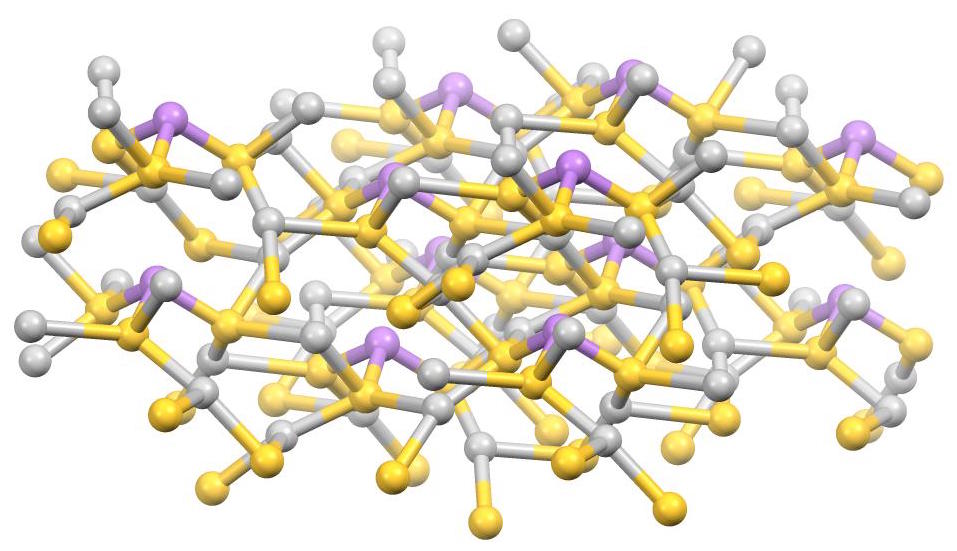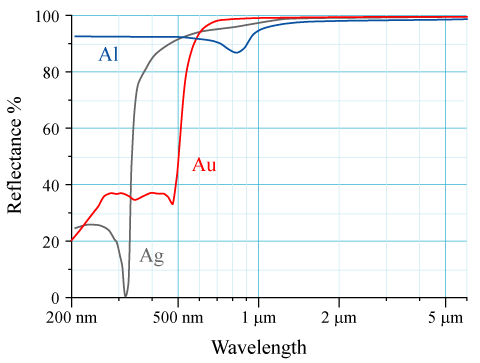|
Fangite
Fangite is a sulfosalt first discovered in the Mercur gold deposit located in Tooele County Utah. The specimen was found in a boulder in the southern Oquirrh Mountains. The only available specimens of fangite are located in the National Museum of Natural History, Smithsonian Institution. The International Mineralogical Association Commission approved the name Fangite after Dr. Jen-Ho Fang, a crystal chemist affiliated with the University of Alabama, in honor of his significant contributions to crystallography, crystal chemistry, and geostatistics. Occurrence Fangite was detected in an isolated vug of sulfide ore stockpile within the Morrin Hill pit at the Mercur gold deposit. Fangite is associated with subhedral pyrite and fine-grained sulfide indicating partial replacement of pyrite, sphalerite, and other sulfide minerals. Based on surrounding materials, it can be concluded that Fangite forms as a result of alteration of thallium sulfates or by substituting fluids that are Ti ... [...More Info...] [...Related Items...] OR: [Wikipedia] [Google] [Baidu] |
Sulfosalt Mineral
Sulfosalt minerals are sulfide minerals with the general formula , where *A represents a metal such as copper, lead, silver, iron, and rarely mercury (element), mercury, zinc, vanadium *B usually represents semi-metal such as arsenic, antimony, bismuth, and rarely germanium, or metals like tin and rarely vanadium *X is sulfur or rarely selenium and/or tellurium. The Strunz classification includes the sulfosalts in a ''sulfides and sulfosalts'' superclass. A group which have similar appearing formulas are the Sulfarsenide mineral, sulfarsenides (for example cobaltite (Co,Fe)AsS). In sulfarsenides the arsenic substitutes for sulfide anions whereas in the sulfosalts the arsenic substitutes for a metal cation.Klein, Cornelis and Cornelius S. Hurlbut (1985). ''Manual of Mineralogy'', 20th ed., John Wiley and Sons, New York . About 200 sulfosalt minerals are known. Examples include: File:Proustite (long prismatic crystal) - Chanarcillo, Copiapo Province, Atacama Region, Chile.jpg, As ... [...More Info...] [...Related Items...] OR: [Wikipedia] [Google] [Baidu] |
Sulfosalt
Sulfosalt minerals are sulfide minerals with the general formula , where *A represents a metal such as copper, lead, silver, iron, and rarely mercury, zinc, vanadium *B usually represents semi-metal such as arsenic, antimony, bismuth, and rarely germanium, or metals like tin and rarely vanadium *X is sulfur or rarely selenium and/or tellurium. The Strunz classification includes the sulfosalts in a ''sulfides and sulfosalts'' superclass. A group which have similar appearing formulas are the sulfarsenides (for example cobaltite (Co,Fe)AsS). In sulfarsenides the arsenic substitutes for sulfide anions whereas in the sulfosalts the arsenic substitutes for a metal cation.Klein, Cornelis and Cornelius S. Hurlbut (1985). ''Manual of Mineralogy'', 20th ed., John Wiley and Sons, New York . About 200 sulfosalt minerals are known. Examples include: File:Proustite (long prismatic crystal) - Chanarcillo, Copiapo Province, Atacama Region, Chile.jpg, As illustrated by this specimen of proustite ... [...More Info...] [...Related Items...] OR: [Wikipedia] [Google] [Baidu] |
Pyrite
The mineral pyrite (), or iron pyrite, also known as fool's gold, is an iron sulfide with the chemical formula Iron, FeSulfur, S2 (iron (II) disulfide). Pyrite is the most abundant sulfide mineral. Pyrite's metallic Luster (mineralogy), luster and pale brass-yellow hue give it a superficial resemblance to gold, hence the well-known nickname of ''fool's gold''. The color has also led to the nicknames ''brass'', ''brazzle'', and ''Brazil'', primarily used to refer to pyrite found in coal. The name ''pyrite'' is derived from the Greek language, Greek (), 'stone or mineral which strikes fire', in turn from (), 'fire'. In ancient Roman times, this name was applied to several types of stone that would create sparks when struck against steel; Pliny the Elder described one of them as being brassy, almost certainly a reference to what we now call pyrite. By Georgius Agricola's time, , the term had become a generic term for all of the pyrite group, sulfide minerals. Pyrite is usua ... [...More Info...] [...Related Items...] OR: [Wikipedia] [Google] [Baidu] |
Reflectance
The reflectance of the surface of a material is its effectiveness in reflecting radiant energy. It is the fraction of incident electromagnetic power that is reflected at the boundary. Reflectance is a component of the response of the electronic structure of the material to the electromagnetic field of light, and is in general a function of the frequency, or wavelength, of the light, its polarization, and the angle of incidence. The dependence of reflectance on the wavelength is called a ''reflectance spectrum'' or ''spectral reflectance curve''. Mathematical definitions Hemispherical reflectance The ''hemispherical reflectance'' of a surface, denoted , is defined as R = \frac, where is the radiant flux ''reflected'' by that surface and is the radiant flux ''received'' by that surface. Spectral hemispherical reflectance The ''spectral hemispherical reflectance in frequency'' and ''spectral hemispherical reflectance in wavelength'' of a surface, denoted and respectively, are ... [...More Info...] [...Related Items...] OR: [Wikipedia] [Google] [Baidu] |
Fracture
Fracture is the separation of an object or material into two or more pieces under the action of stress. The fracture of a solid usually occurs due to the development of certain displacement discontinuity surfaces within the solid. If a displacement develops perpendicular to the surface, it is called a normal tensile crack or simply a crack; if a displacement develops tangentially, it is called a shear crack, slip band or dislocation. Brittle fractures occur with no apparent deformation before fracture. Ductile fractures occur after visible deformation. Fracture strength, or breaking strength, is the stress when a specimen fails or fractures. The detailed understanding of how a fracture occurs and develops in materials is the object of fracture mechanics. Strength Fracture strength, also known as breaking strength, is the stress at which a specimen fails via fracture. This is usually determined for a given specimen by a tensile test, which charts the stress–strain cu ... [...More Info...] [...Related Items...] OR: [Wikipedia] [Google] [Baidu] |
Optical Properties
The optical properties of a material define how it interacts with light. The optical properties of matter are studied in optical physics, a subfield of optics. The optical properties of matter include: *Refractive index *Dispersion *Transmittance and Transmission coefficient *Absorption *Scattering *Turbidity *Reflectance and Reflectivity (reflection coefficient) *Albedo *Perceived color *Fluorescence *Phosphorescence *Photoluminescence *Optical bistability * Dichroism *Birefringence *Optical activity *Photosensitivity A basic distinction is between isotropic materials, which exhibit the same properties regardless of the direction of the light, and anisotropic ones, which exhibit different properties when light passes through them in different directions. The optical properties of matter can lead to a variety of interesting optical phenomena. Properties of specific materials *Optical properties of water and ice *Optical properties of carbon nanotubes *Crystal optics See also *Rama ... [...More Info...] [...Related Items...] OR: [Wikipedia] [Google] [Baidu] |
Conchoidal Fracture
Conchoidal fracture describes the way that brittle materials break or fracture when they do not follow any natural planes of separation. Mindat.org defines conchoidal fracture as follows: "a fracture with smooth, curved surfaces, typically slightly concave, showing concentric undulations resembling the lines of growth of a shell".Conchoidal fracture at Mindat.org Materials that break in this way include , , |
Cleavage (crystal)
Cleavage, in mineralogy and materials science, is the tendency of crystalline materials to split along definite crystallographic structural planes. These planes of relative weakness are a result of the regular locations of atoms and ions in the crystal, which create smooth repeating surfaces that are visible both in the microscope and to the naked eye. If bonds in certain directions are weaker than others, the crystal will tend to split along the weakly bonded planes. These flat breaks are termed "cleavage."Hurlbut, Cornelius S.; Klein, Cornelis, 1985, '' Manual of Mineralogy'', 20th ed., Wiley, The classic example of cleavage is mica, which cleaves in a single direction along the basal pinacoid, making the layers seem like pages in a book. In fact, mineralogists often refer to "books of mica." Diamond and graphite provide examples of cleavage. Both are composed solely of a single element, carbon. But in diamond, each carbon atom is bonded to four others in a tetrahedral pa ... [...More Info...] [...Related Items...] OR: [Wikipedia] [Google] [Baidu] |
Crystal
A crystal or crystalline solid is a solid material whose constituents (such as atoms, molecules, or ions) are arranged in a highly ordered microscopic structure, forming a crystal lattice that extends in all directions. In addition, macroscopic single crystals are usually identifiable by their geometrical shape, consisting of flat faces with specific, characteristic orientations. The scientific study of crystals and crystal formation is known as crystallography. The process of crystal formation via mechanisms of crystal growth is called crystallization or solidification. The word ''crystal'' derives from the Ancient Greek word (), meaning both "ice" and "rock crystal", from (), "icy cold, frost". Examples of large crystals include snowflakes, diamonds, and table salt. Most inorganic solids are not crystals but polycrystals, i.e. many microscopic crystals fused together into a single solid. Polycrystals include most metals, rocks, ceramics, and ice. A third category of ... [...More Info...] [...Related Items...] OR: [Wikipedia] [Google] [Baidu] |
Birefringence
Birefringence is the optical property of a material having a refractive index that depends on the polarization and propagation direction of light. These optically anisotropic materials are said to be birefringent (or birefractive). The birefringence is often quantified as the maximum difference between refractive indices exhibited by the material. Crystals with non-cubic crystal structures are often birefringent, as are plastics under mechanical stress. Birefringence is responsible for the phenomenon of double refraction whereby a ray of light, when incident upon a birefringent material, is split by polarization into two rays taking slightly different paths. This effect was first described by Danish scientist Rasmus Bartholin in 1669, who observed it in calcite, a crystal having one of the strongest birefringences. In the 19th century Augustin-Jean Fresnel described the phenomenon in terms of polarization, understanding light as a wave with field components in transverse polariz ... [...More Info...] [...Related Items...] OR: [Wikipedia] [Google] [Baidu] |
Mohs Scale Of Mineral Hardness
The Mohs scale of mineral hardness () is a qualitative ordinal scale, from 1 to 10, characterizing scratch resistance of various minerals through the ability of harder material to scratch softer material. The scale was introduced in 1812 by the German geologist and mineralogist Friedrich Mohs, in his book ''"Versuch einer Elementar-Methode zur naturhistorischen Bestimmung und Erkennung der Fossilien"''; it is one of several definitions of hardness in materials science, some of which are more quantitative. The method of comparing hardness by observing which minerals can scratch others is of great antiquity, having been mentioned by Theophrastus in his treatise ''On Stones'', , followed by Pliny the Elder in his ''Naturalis Historia'', . The Mohs scale is useful for identification of minerals in the field, but is not an accurate predictor of how well materials endure in an industrial setting – ''toughness''. Minerals The Mohs scale of mineral hardness is based on the ability ... [...More Info...] [...Related Items...] OR: [Wikipedia] [Google] [Baidu] |
Vitreous Luster
Lustre (British English) or luster (American English; see spelling differences) is the way light interacts with the surface of a crystal, rock, or mineral. The word traces its origins back to the Latin ''lux'', meaning "light", and generally implies radiance, gloss, or brilliance. A range of terms are used to describe lustre, such as ''earthy'', ''metallic'', ''greasy'', and ''silky''. Similarly, the term ''vitreous'' (derived from the Latin for glass, ''vitrum'') refers to a glassy lustre. A list of these terms is given below. Lustre varies over a wide continuum, and so there are no rigid boundaries between the different types of lustre. (For this reason, different sources can often describe the same mineral differently. This ambiguity is further complicated by lustre's ability to vary widely within a particular mineral species). The terms are frequently combined to describe intermediate types of lustre (for example, a "vitreous greasy" lustre). Some minerals exhibit unus ... [...More Info...] [...Related Items...] OR: [Wikipedia] [Google] [Baidu] |






